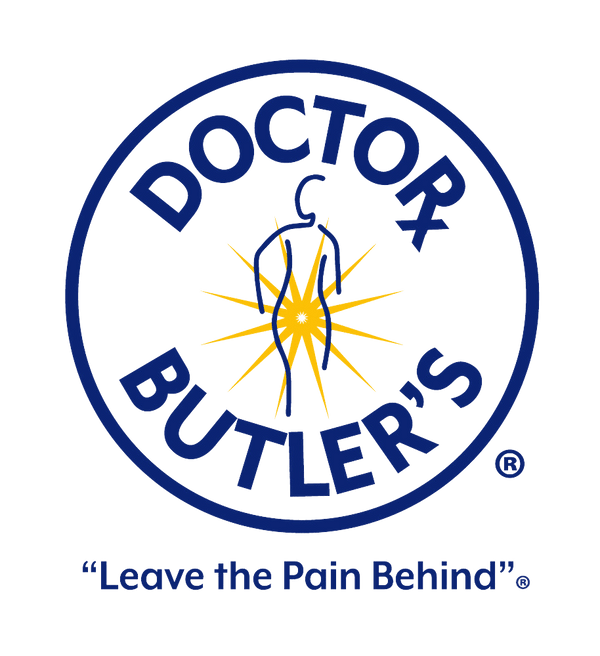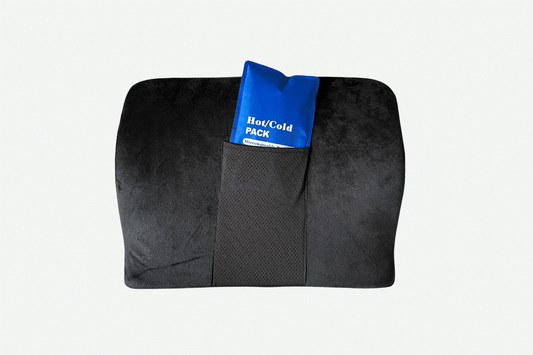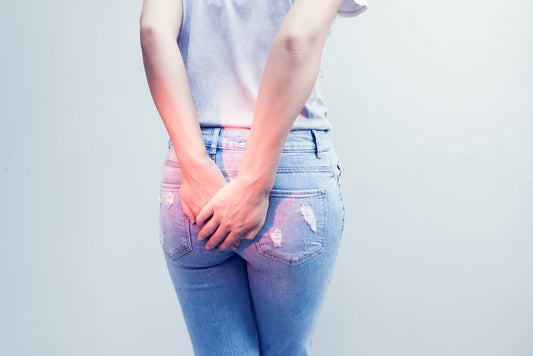What are the Best At-Home & Natural Remedies for Constipation Relief
Robert Cutler, D.O., FAOCPrShare
The French comedy Baby’s Laxative is a triumph of film, having been written, shot and edited in just three weeks. For a movie about a constipated baby, it didn’t take long for director Jean Renoir to get a “move on”...
Three or fewer bowel movements in a week means you're constipated. So does having an overly hard stool that is difficult to pass. If your bowel movements are inconsistent and you leave the bathroom feeling unsatisfied, then this broad introduction to natural remedies for constipation should help get you on your way to better colon and gut health.
What’s good is that there are many easy, natural solutions to common constipation. It’s usually a case of not enough water or not enough fiber (or the right kinds of fiber, which we’ll get into later). Your body needs water and it needs the right fibers to get that water into your stools. If your body does this effectively, it makes stools easier to pass.
Up to one out of every five people report chronic constipation. With it comes hemorrhoids and other unpleasant symptoms that affect large portions of the population. These ten expert tips for easier trips to the bathroom will help to relieve constipation and other downstream symptoms.
1. Water
Recommended? Yes!
You’ve heard it a million times but that’s because it really works: drink more water. Lots of people simply don’t drink enough throughout the day, causing hard stools that are difficult to pass. Stools soften with a sufficient amount of water, making them easier to work through your body.
What’s great about this solution is how easy it is to add into your routine. Tap, filtered and bottled water will all work the same. Try to get in about eight glasses a day (or 15.5 cups for men and 11.5 cups for women). Pace out your water intake over the course of a day, instead of drinking a whole gallon when you wake up in the morning.
2. Exercise
Recommended? Yes!
Staying active is another solution you’ve likely come across... This is because exercise helps to keep weight down, and thus, prevents excess weight and blood pressure from slowing the normal processes of your body’s digestive tract. More weight tends to come with a lower metabolism, higher blood pressure, and other issues, and more exercise tends to decrease many issues, from arthritis to diabetes.
The goal for you should be to stay active, more so than becoming ultra-fit. Even “some physical activity is better than none,” states the U.S. Department of Health and Human Services Physical Activity Guidelines for Americans. Aim for two and a half hours of moderate-intensity activities (some examples below) a week. Alternatively, get in 75 minutes of vigorous-intensity activities spread throughout your week.
As you can see in the list below, simply working on home repairs or going on walks for less than half an hour a day can get you to a recommended level of physical activity. This is not only going to help with constipation but promote positive health outcomes throughout your life. Seven of the 10 most common chronic diseases (type 2 diabetes, cardiovascular disease, osteoarthritis, or cancer, etc.) become less common with regular exercise...
Moderate-Intensity Activities suggested by the Physical Activity Guidelines for Americans 2020-2025
- Walking briskly (2.5 miles per hour or faster)
- Recreational swimming
- Bicycling slower than 10 miles per hour on level terrain
- Tennis (doubles)
- Active forms of yoga (for example, Vinyasa or power yoga)
- Ballroom or line dancing
- General yard work and home repair work
- Exercise classes like water aerobics
Vigorous-Intensity Activities suggested by the Physical Activity Guidelines for Americans 2020-2025
- Jogging or running
- Swimming laps
- Tennis (singles)
- Vigorous dancing
- Bicycling faster than 10 miles per hour
- Jumping rope
- Heavy yard work (digging or shoveling, with heart rate increases)
- Hiking uphill or with a heavy backpack
- High-intensity interval training (HIIT)
- Exercise classes like vigorous step aerobics or kickboxing
3. Fiber
Recommended? Yes, but...
If constipated, you will want to increase your intake of nonfermentable, gel-forming fiber. The descriptor ‘nonfermentable’ (and fermentable opposite that) may be unfamiliar to you but it’s actually a classification that the latest nutrition research suggests, as opposed to the more commonly referred-to breakdown of fiber types as either soluble and insoluble.
If you haven’t heard of soluble, insoluble, nonfermeted, gel-forming, etc., that’s ok. You really only need to know that psyllium, most likely labeled psyllium husk at the food store, is a fiber source proven to relieve constipation and improve stool consistency. Psyllium comes from the ground-up husks of the seeds of the Plantago Ovata herb.
This ground husk can be added to foods or digested with water. Follow package directions if you are self-directing your constipation treatment with psyllium. Another proven food to treat constipation is coarse wheat bran. Combine the two in a bowl of cereal like Kellogg’s All-Bran Buds.
What’s interesting about wheat bran, though, is that it increases the water content in the stool (and thus softens it) when coarse, but decreases stool’s water content when finely ground. So, eat it course! Believe it or not, Hippocrates knew of the laxative effect of coarse wheat in comparison with refined wheat way back in 430 BC.
Ask your doctor for more nutrition recommendations to help treat chronic constipation and promote good colon health. Not all fiber-rich foods are good to eat when constipated despite what a lot of information online says.
4. Probiotics
Recommended? Yes!
Probiotics are another proven treatment for constipation. The issue, however, is that further studies are needed to determine which specific probiotic bacterias are the most effective. A 2014 literature review of clinical trials of probiotic treatments for constipation found probiotics to generally soften stools and increase the number of bowel movements.
This Harvard Health Blog goes more in-depth in explaining the broadness of the study.
When you go grocery shopping or to the drug store there will be different kinds of probiotics to choose from. The most common are Lactobacillus or Bifidobacterium. The National Institutes of Health states that Lactobacillus is possibly effective at reducing symptoms of constipation including stomach pain and discomfort, bloating, and incomplete bowel movements and that it may also increase the frequency of bowel movements in some people.
The NIH suggests taking probiotics for 4 to 8 weeks. Lactobacillus is typically added to probiotic dairy products like yogurt and cottage cheese, and can be found in fermented foods like sauerkraut and miso. Many dairy products will state the name of the probiotic bacteria contained in the item, and Lactobacillus may also be referred to as L. acidophilus.
Talk to a doctor before taking probiotics if you are critically ill, your immune system is weakened or if you’ve recently had surgery. It is generally safe for healthy people to take a probiotic like Lactobacillus but review the NIH’s warnings before starting treatment and speak to a doctor or nutritionist if you have questions.
5. Coffee
Recommended? No.
Coffee is sometimes mentioned as an obvious solution for constipation relief, but it really only is when decaffeinated. Even so, go with a better-proven treatment. Because coffee is high in caffeine content, and caffeine is dehydrating, you actually don’t want to use this as your constipation treatment. It can make your stool composition harder.
6. Coconut Oil
Recommended? No.
All recommendations for coconut oil constipation treatments are anecdotal, meaning there’s no clinical studies that have found it to be effective. For that reason, try sticking with psyllium or coarse oat bran to treat constipation. Those food sources of fiber have been proven to help treat constipation.
This Medical News Today article discusses the evidence behind coconut oil’s use as a natural laxative. Many claims for its effectiveness come from a 2003 study that actually says nothing about constipation, and doesn’t provide good evidence for obesity prevention and other claims, explains Medical News Today.
7. Senna
Recommended? Yes! (And no)!
This natural laxative is made from the leaves and fruit of the Senna plant. The National Institutes of Health has found Senna supplements to be likely effective at treating constipation, and works by “irritat[ing] the lining of the bowel, which causes a laxative effect.” It can be found as an over the counter remedy at the drugstore.
The only problem with senna is dependency since the more you use it, the more you will require over time to continue receiving the desired effect.
The UK National Health Service recommends taking Senna once a day at bedtime. The most common side effects are diarrhea and stomach cramps, and while it’s safe for most people, talk to a doctor first if you have ever had an allergic reaction to Senna or any other medicine in the past. Anyone taking Senna supplements hould use it for less than one week.
Also talk to a doctor if you have a bowel disease or obstruction, have appendicitis, Chrohn’s disease or ulcerative colitis, or if you are trying to get pregnant, are currently pregnant or if breastfeeding.
8. Prunes, Figs, and Raisins
Recommended? Yes! (and no!)
Prunes contain the natural laxative sorbitol, making them a great treatment for constipation and general colon health. Sorbitol is a naturally occurring sugar alcohol that gets fermented by the bacteria in the large intestine. In fact, any food with excessive sorbitol or mannitol must include a warning on its label that states “excess consumption may have a laxative effect.”
Read more about sugar alcohols in this FDA nutrition fact sheet.
This fruit spread recipe contains prunes and is recommended by the British Columbia health system to help with constipation.
- 250 mL (1 cup) prunes
- 250 mL (1 cup) raisins
- 250 mL (1 cup) dates
- 125 mL (1/2 cup) orange juice
- 150 mL (2/3 cup) prune juice
- 250 mL (1 cup) of wheat bran (optional)
Combine and soak the ingredients overnight. Blend until spreadable the next day. Mix it into plain yogurt or hot cereals, or spread it on toast. It will stay good in the refrigerator for two weeks. Freezing it is ok too.
The problem with these fruits is similar to the dependence effect of senna. The more you use, the more you will require over time to continue receiving the desired effect.
9. Omega-3 Oil
Recommended? No.
There is some evidence that the omega-3 fatty acid supplements sourced from fish oils can be an effective laxative, though fish oil supplements are not a well known or widely advised treatment for constipation. That’s because omega-3 thins blood which could make you more susceptible to bleeding, and lots of it can cause gas, bloating and diarrhea. These supplements are not recommended.
10. Aloe Vera
Recommended? No.
Aloe Vera, like Senna, is another stimulant herb. Aloe Vera juice is sometimes theorized to be useful to treat constipation, though there are no studies that have been able to prove this. At least three clinical trials performed between 2006 and today have confirmed this. Because its effectiveness can’t be proven like in the case of psyllium or Senna, it’s not recommended to treat constipation.
When to Consult Your Doctor for Constipation
At home relief for constipation can be a multi step process that includes lots of trial and error to see what works for your body. If you have had constipation, defined as three or fewer bowel movements a week, and have had it for at least a week, it’s a good idea to see a doctor who can recommend treatment options.
Lots of constipation treatment comes down to lifestyle changes, which means altering your diet and increasing your exercise levels. Try to switch your breakfast to one consisting of coarse oat bran cereal and added psyllium. While you’re at it, try a prune or two. The American diet consists of lots of constipation causing foods so it’s not uncommon that you may be feeling “backed up”.
A good reason to make these changes is to not only prevent constipation, but to prevent all of the unpleasantness that comes with constipation like bloating, cramps and hemorrhoids. Because many constipation treatments are going to take time to regulate your digestive system, be sure to treat related disorders such as hemorrhoids to prevent ongoing or worsening symptoms. Anorectal pain for example , can be treated with a Lidocaine cream in the meantime.
Doctor Butler’s has been an expert in hemorrhoid related treatments since 2006. Many of our customers deal with chronic constipation and thus, chronic hemorrhoids, and it’s important for us to teach people not only about their symptoms but about their causes, so they can “Leave the Pain Behind” for good.


